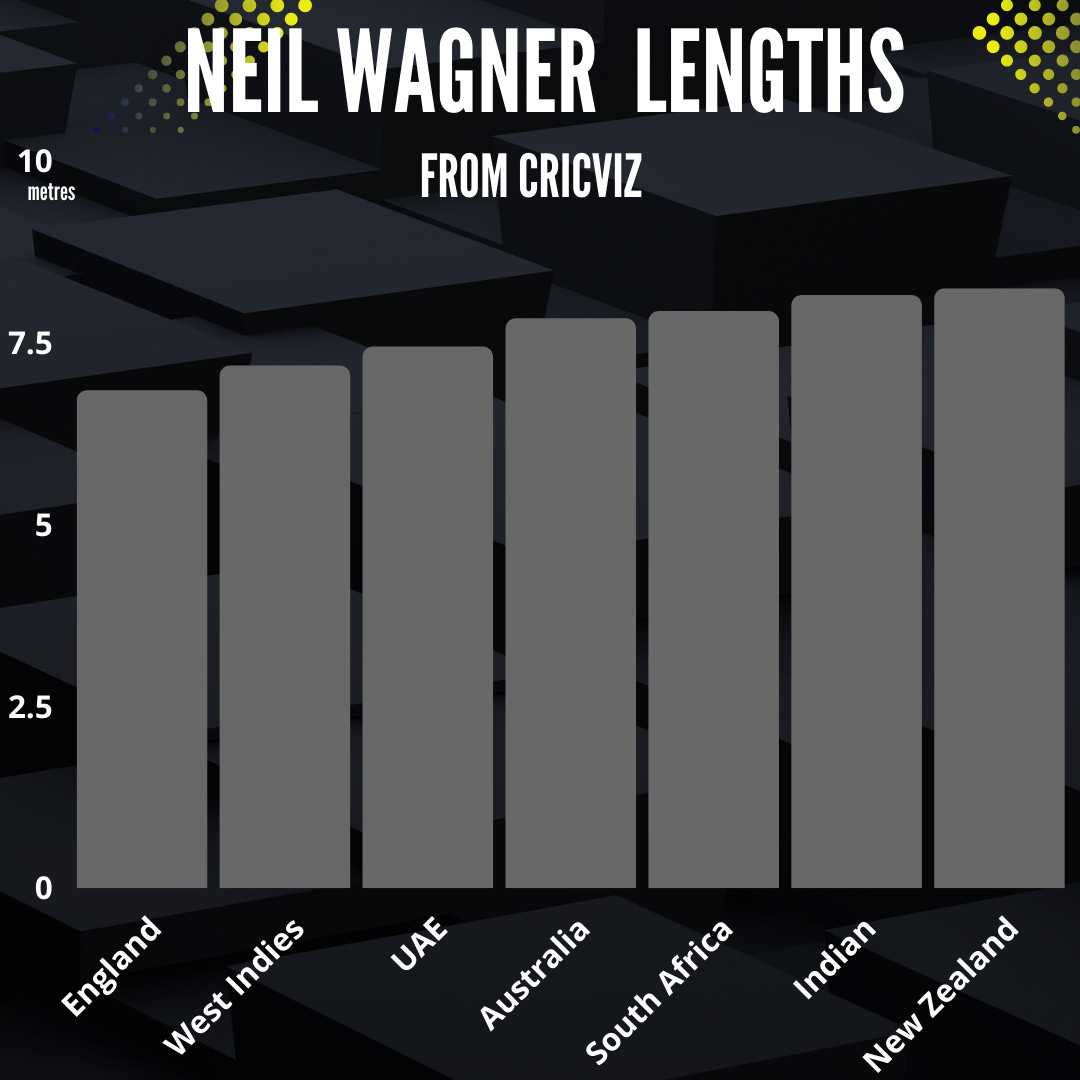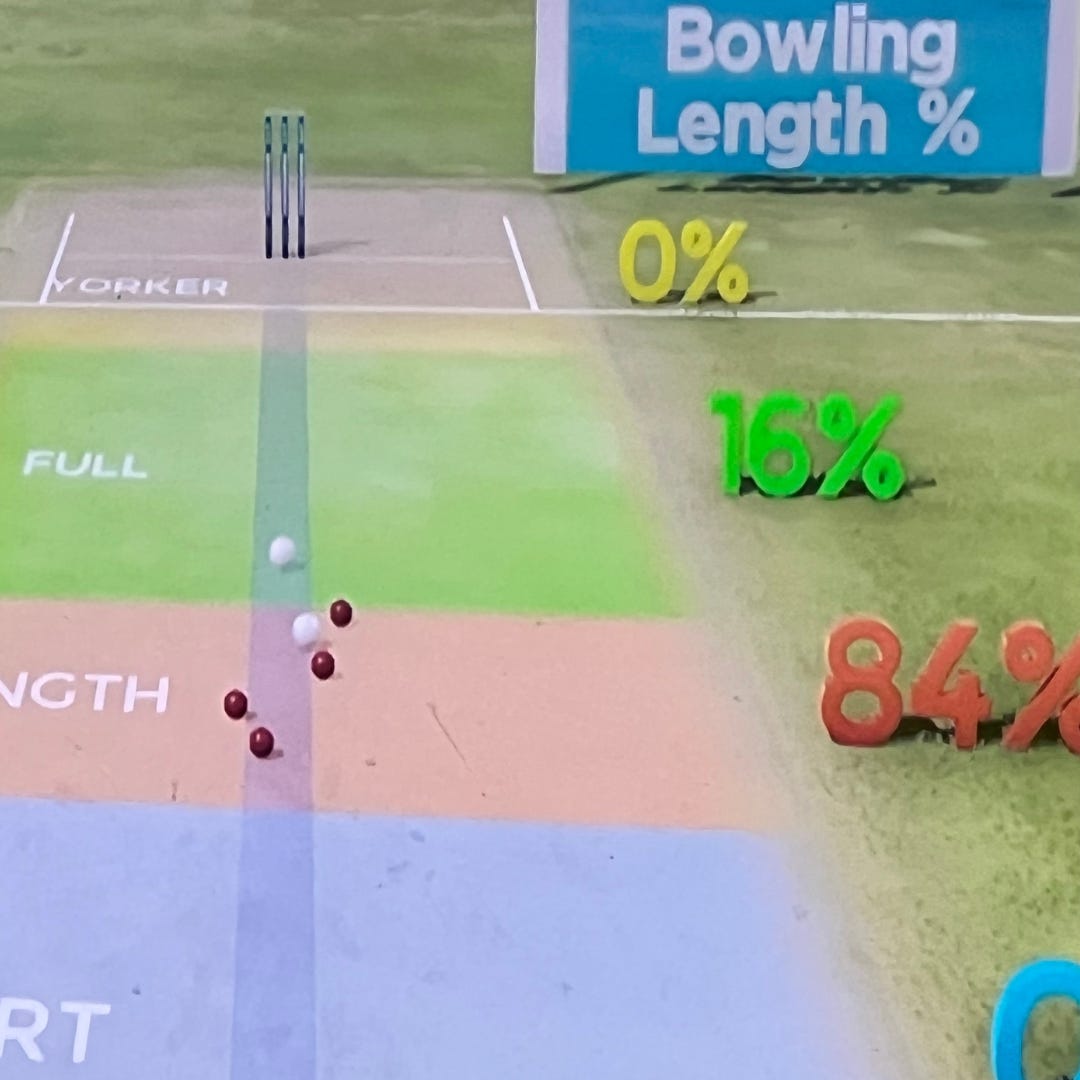New Zealand's three quicks
Looking at the little gains Southee, Boult and Wagner.
The three New Zealand seamers they ended up with at Headingley is the core that helped build this team. Yet we had to wait until they had already gone down two-nil is pretty bad. You could say they are the third, fourth and fifth most successful bowlers in New Zealand history.
In fact, let's do a fun thing. If you look at all the wickets New Zealand have ever taken by bowlers, then the combination of Boult, Southee and Wagner have over 14%.
That's a huge amount, even if New Zealand have a history of chosen special bowlers with a huge percentage. Hadlee has almost 7% of their wickets: he retired in 1990.
When he did left the game, Hadlee had over 17% of their wickets, which means he took nearly one in six of them.
Anyway, he was handy.
But Wagner, Boult and Southee have been incredible over the last decade and change. And there are obvious reasons. Wagner invented a new kind of bowling, a medium-fast left-arm bouncer dude complete with his own peculiar field. Boult is a fast left-armer who can swing it. And Southee is an outswinger with a wicked wobble ball.
These are their main skills. It's got them a bunch of wickets. But all of them are so smart within that. And you could see this when they took England's first six wickets for not many runs on day two.

Boult started it. One thing is how he changed his lengths in this series depending on where he was bowling. He was shorter at Lord's when he wanted the seam, tried to find a better length at Trent Bridge that could trap people on the crease and then pitched up at Headingley. There is a metre difference between his lengths in each of those spells.
And it's his first spell we are talking about. He is working these things out so fast compared to other players.
But there is one wicket I want to talk about here, and that's Zak Crawley. That's largely because of what happened in the previous Test.
Crawley was dismissed not once, but twice, buy a three-quarter seam wobbleball. This is the delivery that Kyle Mills perfected, and now bowlers like Southee and Mohammad Siraj use. Boult did it pitching around middle stump, and then moving away from the right hander.
Without bowling a pretty obvious cutter, almost no left-arm fast bowlers take the ball away from normal-handers. Boult did it twice, with a wobble ball which meant that it got in the head of Crawley.
So how does he dismiss him this innings? By moving it the other way with swing. One thing hard to do - modern bowlers tell me - is move between swing and the wobbleball. Even though they basically use the same wrist position. And yet that is what Boult did.
Crawley is looking for the ball going straight or leaving him, and Boult again wobbles the seam. But not as much as the Trent Bridge balls, this is a more conventional wobbleball (if such a thing exists). And it still swings. It's possible it was just supposed to swing and he got the seam not perfect, or he's worked out, like Anderson has, sometimes how to wobble the seam and still get swing.
All this is technical, but what you really need to know is that Crawley was worried about the ball going away, and Boult brought it back.
What Tim Southee did was something a little less technical. His ability to turn himself from an outswing bowler, to a wobbleball specialist has been incredible. But over recent years, I've wondered if Southee is the best user of the crease in the modern game. Most bowlers don't use the crease as much now, as on mass they have come wider.
But Southee uses it as a weapon. To Joe Root, he started with a wide ball, then went close to the stumps quite a few times, before before jumping out again. Southee gets a lot of wickets this way. It's more of a traditional outswing method. If the ball is coming straight at you and moving away, it's tricky, but once it is outside off you can leave. If you come from wide, it makes you play at balls you would usually not play. Plus it is a variation, the new angle bothers people.
Joe Root's ball would have been incredible had he received it first up. But because of what he did before, Southee made it better.
And then you have Neil Wagner, who is such an outlier I made a hugely long video essay just trying to describe how different he is from every other bowler who ever existed.
You can see that he bowls nearly 50% of short balls in most places.
The only locations he doesn't is the UAE, probably because it wouldn't bounce there.
And England and the West Indies, both users of Dukes balls. It could be that he wants the ball to swing more, but also maybe the dukes doesn't bounce the same way as the kookaburra. Either way, he pitches up here.
And you can see in England he bowls an incredibly full length. That is because he wants the ball to swing. But it's not been his speciality over the years, and so he had to improve that skill.
In one over he managed to do that so well that he should have won the game for New Zealand. Taking Stokes through a lack of patience, then swinging two balls straight back into the pads of Foakes and Overton. Sadly for New Zealand, the Overton one wasn't out. And later on, there was a better one they should have reviewed.
Wagner hasn’t always had control of his swing. But as he struggles to bowl the 12 over spells of nothing but bouncers, he's adapted to keep himself relevant. And that's really what all three of them had done.
Most left-arm fast bowlers aren't as skilful as Boult, and yet he keeps adding. If you had told me that Southee's medium fast outswing would still be relevant in 2022, I would never have believed it. And Wagner became the most extreme bowler we had seen in cricket, and to keep himself in the game went back to a left-armers most core skill.
That New Zealand now have Jamieson, and it took them three Tests in England to fit these three in, suggests their end is coming. And yet here they all are, still getting better, and learning.













